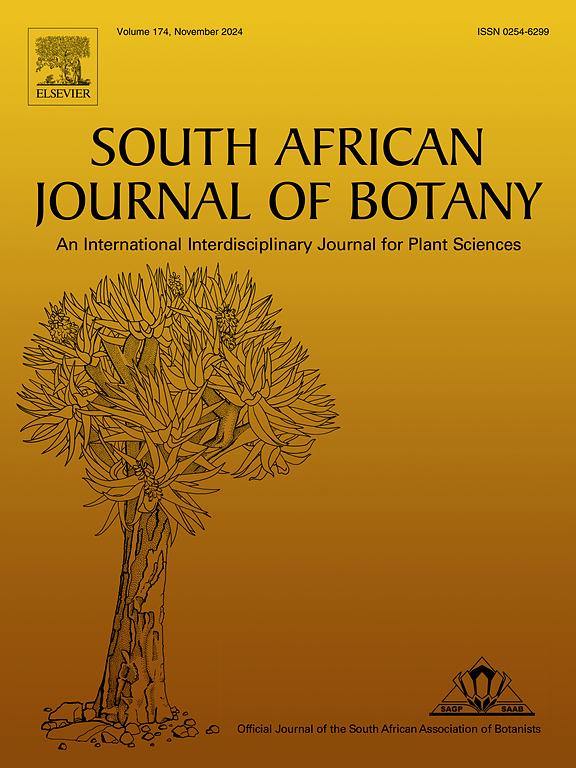油辣木籽食品的工业应用、毒理学影响和营销趋势综述
IF 2.7
3区 生物学
Q2 PLANT SCIENCES
引用次数: 0
摘要
食品营养强化是指在食品中添加必需的矿物质、维生素和生物活性化合物,以满足消费者的营养质量和能量需求。营养学家利用合成的和现成的微量营养素来强化主食和副食,从而满足消费者的营养和能量需求。在过去的十年中,食品科学家对油辣木开发食用产品并将其作为强化剂的兴趣与日俱增。这篇综述文章特别关注辣木叶粉末提取物的营养质量、植物化学成分以及在不同商业饮料、面包、酸奶和烘焙食品中的应用。文章还深入探讨了食用辣木的临床证据和毒理学影响,强调了辣木对乳糜泻的健康促进作用。此外,这篇全面的综述还为食品行业的研究人员和专业人士提供了宝贵的见解,指导他们根据最新趋势开展研究和开发项目。辣木叶粉末和提取物在强化面包、酸奶、饼干、布朗尼、蛋糕、饼干和饮料等食品方面发挥着关键作用,可提高其营养质量、植物化学成分含量和保质期,且不会明显改变感官属性。食用辣木强化产品可能会对乳糜泻患者产生积极影响。重要的是,目前还没有关于食用这些产品会产生毒副作用的报道。不过,有必要进一步研究辣木粉和提取物的毒理学评估,特别是它们对患有血糖、心脏和关节炎的人的影响。有关这方面的现有文献十分有限,而且由于试验条件和试验处理方式的不同,现有数据可能存在争议。本文章由计算机程序翻译,如有差异,请以英文原文为准。
Industrial applications, toxicological impact and marketing trends of Moringa oleifera food products, a review
Food fortification entails augmenting essential minerals, vitamins and bioactive compounds in food products to benefit the consumers by fulfilling their nutritional quality and energy requirements. Nutritionists employ synthetic and readily available micronutrients to fortify both staple and non-staple food items, thereby meeting consumers’ nutritional and energy needs. Over the past decade, food scientists have displayed a growing interest in Moringa oleifera for developing edible products and incorporating them as fortifiers. This review article specifically focuses on nutritional quality, phytochemicals, and utilization of moringa leaf powdered extracts in different commercial beverages, bread, yoghurt, and bakery products. The article also delves into clinical evidences and toxicological impacts of moringa consumption, emphasizing its health-promoting effects against celiac disease. Moreover, this comprehensive review provides valuable insights for researchers and professionals in the food industry, guiding their research and development projects in line with recent trends. Moringa leaf powder and extracts play a pivotal role in fortifying food products, such as bread, yoghurt, cookies, brownies, cake, biscuits, and beverages enhancing their nutritional quality, phytochemical content, and shelf life without significantly altering sensory attributes. The consumption of moringa-fortified products may positively impact individuals with celiac disease. Importantly, no reported toxicological effects have emerged from the consumption of these products. However, further studies on toxicological evaluations of moringa powder and extracts, particularly focusing on their impact on individuals with glycaemic, cardiac, and arthritis conditions, are warranted. The existing literature on this aspect is limited, and available data may be controversial due to various trial conditions and experiment handling.
求助全文
通过发布文献求助,成功后即可免费获取论文全文。
去求助
来源期刊

South African Journal of Botany
生物-植物科学
CiteScore
5.20
自引率
9.70%
发文量
709
审稿时长
61 days
期刊介绍:
The South African Journal of Botany publishes original papers that deal with the classification, biodiversity, morphology, physiology, molecular biology, ecology, biotechnology, ethnobotany and other botanically related aspects of species that are of importance to southern Africa. Manuscripts dealing with significant new findings on other species of the world and general botanical principles will also be considered and are encouraged.
 求助内容:
求助内容: 应助结果提醒方式:
应助结果提醒方式:


